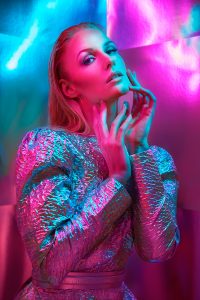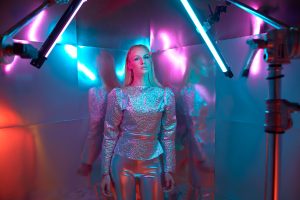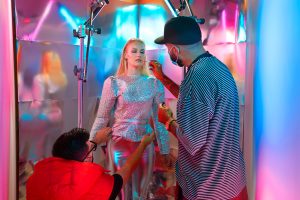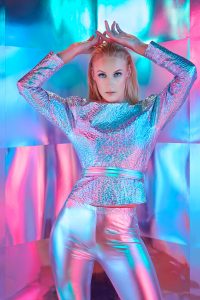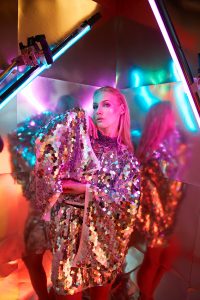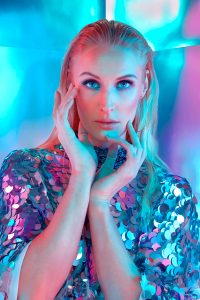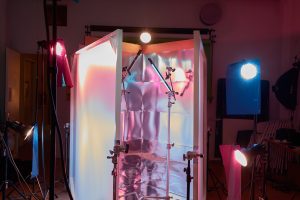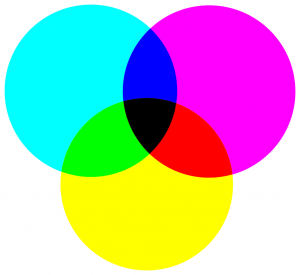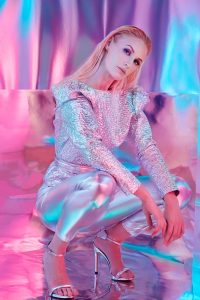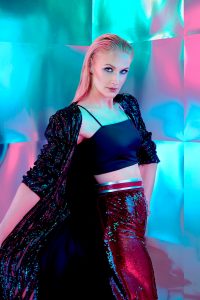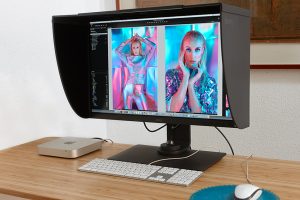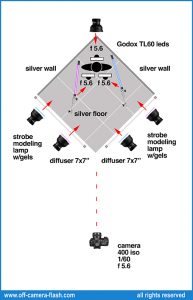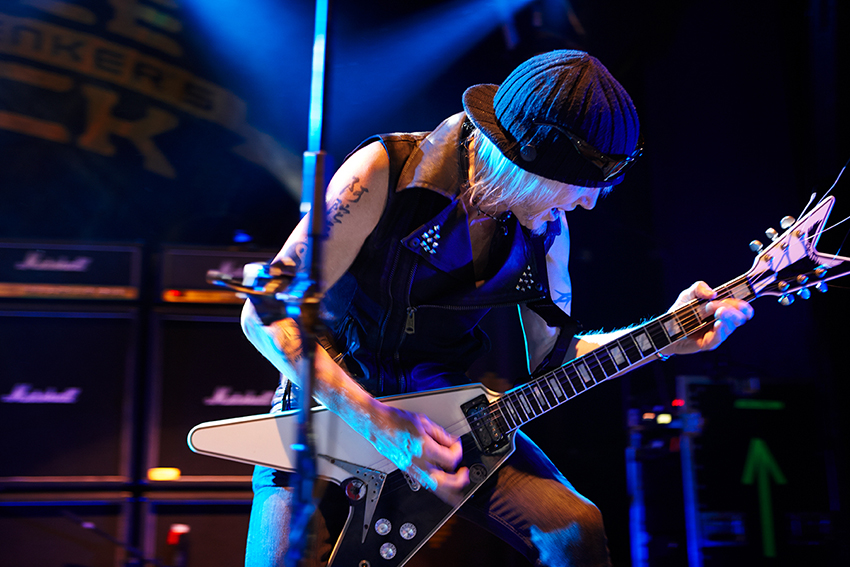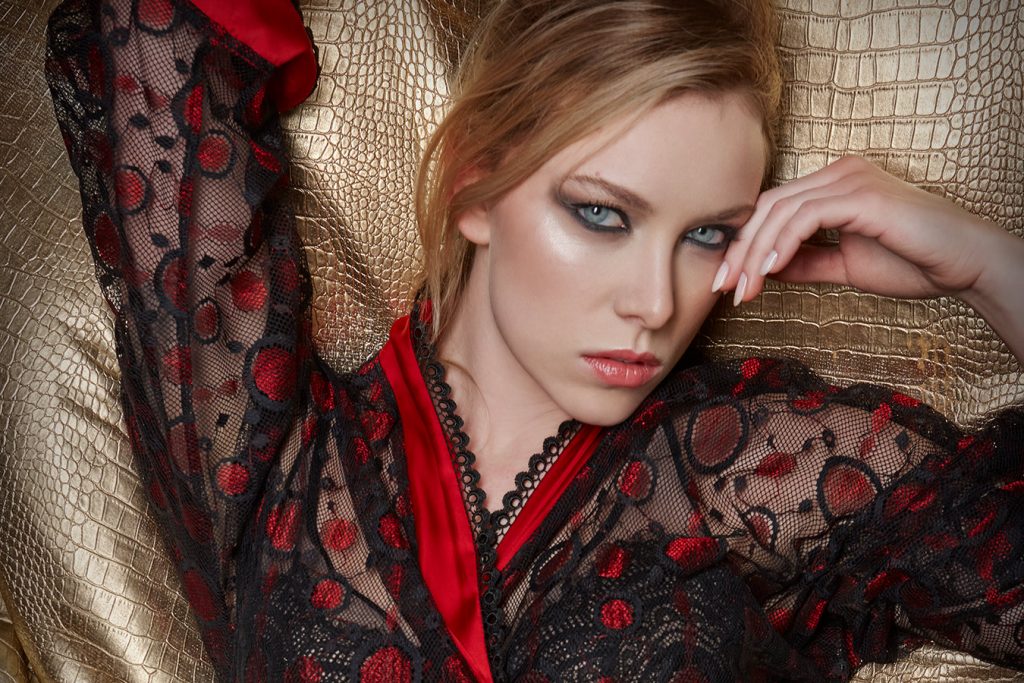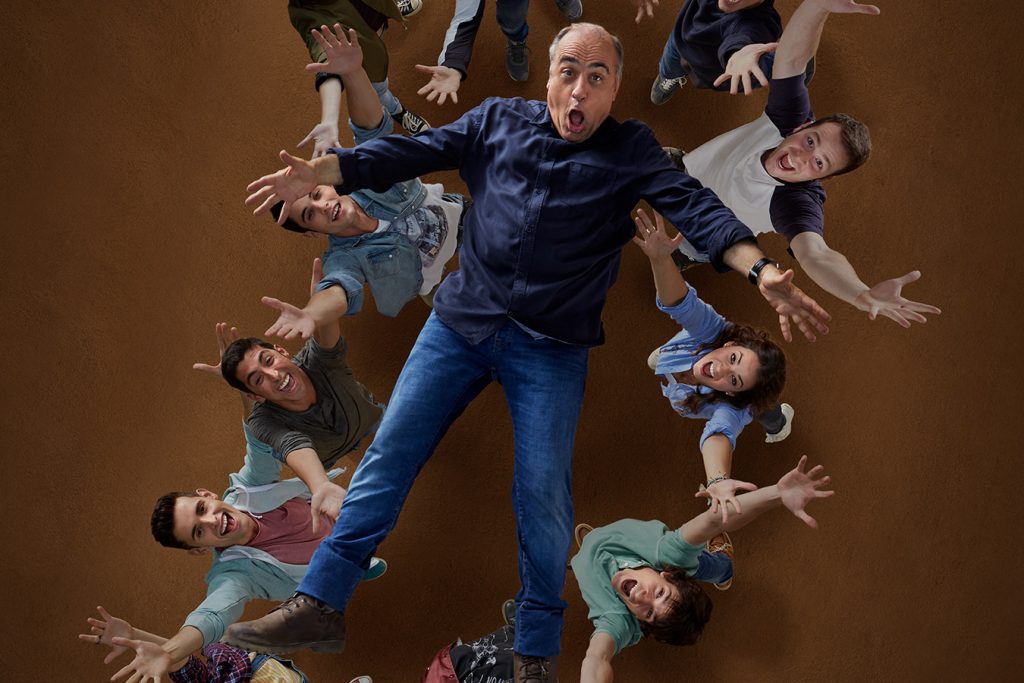Godox recently sent me a pair of LEDs to test their features as applied to photography. The TL60 is Godox’s latest addition to its range of continuous lights.
Like other tube lights already available on the market, the Godox TL60 features RGB color control. The inclusion of the RGB range gives access to a lot of creative effects.
The challenge of the shoot was to see how much I could get out of a single pair of lights. I decided to work with colors since the variety of colors offered by this product is amazing. It has 39 special effects, many of which are fantastic for video. And for photos, the full range of Rosco and Lee colors is available.
I decided to assemble a set that looked like the corner of a room made up of silver panels. In this way, the specular surface they would generate would reflect the light emitted by the two LEDs. The combination of cyan and magenta has always appealed to me and I decided to place one on each side of the model’s face.
For this session both styling and makeup were very important. The makeup had to shine and so did the clothes. In this way the lights multiplied their effects around the model’s body. Finally, the model had to have a light skin tone to further enhance the incidence of light on her face.
These LEDs have a small display to change the brightness and colors, but this can also be done in other ways. The light can be controlled remotely with a DMX controller, or an app. The addition of DMX control is quite interesting, as DMX allows lights from multiple brands to work together with a single controller.
In the light specifications we see that this light consumes 18 watts and has a power of 1500 lux at 100% brightness, with a CRI of 96 and a TLCI of 98. This means that this light might not be the most suitable as a main light, as it is not very bright, but should be used as an accent light. However, at 400 ISO and with a speed of 1/60th of a second, I was able to hold the camera handheld without the need of a tripod, achieving a result according to my expectations.
I decided to open up the shot a bit more and take some “American shot” photos. Since it was a set designed to reflect lights, I had to place more colored light points. Since I didn’t have any more led lights, I used the four-flash modeling lights.
When working with continuous light and white balance for daylight, the mixture of the color temperature of the modeling light from the flashes, which is 3200ºK, with a yellowish tone, would mix with the magenta and cyan gelatines, generating other strong colors. The mixture of cyan and yellow gives an intense green tone and that of yellow and magenta, a very warm orange-red.
The TL60 LEDs produce a very pleasant quality of light with a certain contrast, producing linear reflections on the skin. On the contrary, I wanted the lights on the silver cardboard panels to be like spots of color that were not so spotty. To do this, instead of directing the circular reflectors of the flashes directly on the background, I placed two very large diffuser panels on either side of the camera. As the light passed through, the reflection ceased to be punctual and became a larger, color-degraded spot.
Finally, I took some full body shots. I could have done it with more leds, but as I didn’t have them, I worked this time with 5 studio flashes, four of them with colored gelatins and the fifth one in backlight to shade the hair. As the light from the flashes passes through two large 2×2 m diffusers. increases the illumination area and thus softens the light. In this way, the colors are also desaturated, achieving a “more pastel” result.
The Godox TL60 LEDs have been surprisingly effective and I’m looking forward to working with more of them!
Another important point to note is that the effectiveness of color management was easy to achieve with a professional monitor such as the BenQ SW 271C. With a 4K resolution (3840 x 2160 pixels) , it features color reproduction with a ΔE of less than 2, covering 100 % of the sRGB color scale and 99 % of the Adobe RGB The pixel density is 163 ppi, with a contrast ratio of 1000:1, maximum brightness of 300 cd/m2 and a response speed of 5 ms. Color reproduction is 10-bit true color with a 16-bit lookup table.
BenQ SW271C
Agradezco especialmente a Idep Barcelona, escuela de formación práctica y profesional en Moda, Diseño Gráfico y Fotografía , haberme permitido realizar la sesión en sus instalaciones.
lighting scheme I
Lighting scheme II
Lighting scheme III
All right reserved © Marcelo Isarrualde
No part of this publication may be reproduced in any form or by any means without the written permission of the author.
